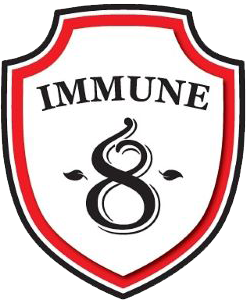What are the benefits of Rosewood Essential Oil?
Rosewood Essential Oil
Aniba rosaeodora
Family: Lauraceae -shrubs, and trees having flowers with definite stamens in several series of three, united sepals, no petals, and a single pistil
What are the Benefits of Rosewood Essential Oil?
Each oil consists of many active constituents (chemical makeup) that are unique to just that plant, tree, or shrub. Various parts of that plant (stem, leaves, bark, resin, flowers) are used in making oil. Therefore, they contain different active constituents designed by nature for protection and growth. The location in the world where the plant is grown affects its therapeutic nature as well. The mixture of the chemistry of the plant gives it the aroma. There are several ways to extract the oil but mostly the oil is produced by steam distillation. This is known as the best method without harming active ingredients.
Rosewood Oil Active Chemistry Constituents
Rosewood is mostly composed of linalool about 80-90%. May contain cineole, terpineol, geraniol, citronellal, limonene, pinene, and lesser amounts of others. Large electropositive potential (-)-linalool contains anti-inflammatory and anti-microbial activities (da Silva et al., 2016).
Below are evidential research findings on Rosewood oil as an anti-viral, anesthetic, anti-bacterial, anti-cancer, and other factors. Rosewood can handle temperature up to 183 F and keep in mind that steam distillation is between 240 to 260 F so the oils can take the heat and still have great beneficial actions.
Immune Effects and Anti-cancer Benefits
- Linalool is a member of the monoterpenoid alcohol family. Known for its chemopreventive properties. Linalool cytotoxic effect was evaluated with cervical cancer cells HeLa (Human papillomavirus) and U937 lymphoma cells. The results showed linalool-induced cell apoptosis or cell death (Chang et al., 2015). DOI: 10.3390/ijms161226089
- A. rosaeodora, rich in linalool, induced selective apoptosis (cell death) in precancerous and cancerous skin cells and the vago-vagal bradycardic and depressor reflex in rats (da Silva, Maiab, Dosokyc & Setzerc, 2016).
Anesthesia Efficacy
- Aniba rosaeodora constituent of linalool as anesthesia and sedatives was found to be effective and safe with large freshwater fish for 1-10 minutes (Baldisserotto et al., 2018). DOI: 10.1590/1982.0224-20170128
- Fast and reversible effects of linalool as an anesthetic was instrumental at progressing the biological stem cell research and regeneration of Hydra a transparent polyp (Goel et al., 2019). DOI: 10.1371/journal.pone.0224221
- Rosewood has found to be an effective anesthetic agent for goldfish bio-research and zoo health management. Lower concentrations can be used. Noticeable calmness was seen during procedures with a quick recovery. Therefore, no harmful side effects on the goldfish (Kizak et al., 2018). DOI: 10.1016/j.aquaculture.2018.05013
Anti-viral Benefits
- Kohn et al., (2012) found rosewood oil was able to inhibit viral growth at 90% when added to the replication cycle of avian metapneumovirus. DOI: 10.3109/13880209.2012.673627
Anti-bacterial Benefits
- Researchers found that (-)-Linalool mixed with β-cyclodextrins was able to protect the mucosa lining from lesions known as ulcers caused by acetic acid (da Silva et al., 2016). DOI: 10.1007/s00210-016-1298-3
- Anti-bacterial properties of Linalool were evaluated on Pseudomonas aeruginosa which is a common foodborne bacterium. Researchers found linalool could destroy cell memory promoting cell death and can be used as a natural preservative in food (Liu et al., 2020). DOI: 10.1016/j.micpath.2020.103980
Other Rosewood Essential Oil Articles
- Souto-Maior and colleagues (2017) found Linalool oxide useful as an anti-convulsant agent and helped with reducing pain and sensitivity. Found safe with no motor impairment. DOI: 10.1080/13880209.2016.1228682
- The diamondback moth destroys $1 billion of US crops every year. They have grown resistant to many insecticides. Rosewood, garlic, and thyme were shown to kill eggs and larvae (Sangha et al., 2017). DOI: 10.4039/tce2017.13
- Kiran Patil from Organic Facts listed Rosewood benefits as an analgesic, anti-depressant, antiseptic, aphrodisiac, antibacterial, deodorant, insecticide, and stimulating to the brain.
Rosewood is mostly grown in the Amazon region. Additionally, Brazil and Peru. This wood has been used for furniture, perfumes, and chopsticks (The Illustrated Encyclopedia of Essential Oils). In some areas of north and south amazon contain two varieties of rosewood. Similarly, Brazil has a young rosewood tree that has high (-)-linalool and (-)-linalool. French Guiana has tested leaves containing 73-78% linalool, with trunk wood oils tested 100% (Chantraine et al., 2009). A. rosaeodora should not be confused with Aniba parviflora, two different trees with different ratio compounds. There are also other trees/shrub that are listed as rosewood, Dalbergia Stevenson, and Pterocarpus Santalinus. Used in Chanel perfumes since 1930. Rosewood leaves are now being considered to save the trees, and synthetic rosewood is also used (Souza et al., 2011).
Safety data on Rosewood Essential Oil
An important aspect of researching the oils involved the safety data. Rosewood stated non-toxic, non-irritant, and non-sensitizing. According to The Illustrated Encyclopedia of Essential Oils, by Julia Lawless, these are the attributes of Rosewood oil.
- Skincare: acne, dermatitis, wounds, scars
- Immune system: colds, cough fever infections, stimulates immune processes
- Nervous system: frigidity, headaches, nausea, nervous tension, stress
Also, Rosewood is significant at opening the inner ear and renewing spiritual feelings. It also helps with releasing offensive memories and expanding the heart chakra. The benefits of rosewood oil defend the skin because of its antiseptic and antibacterial properties. Calms the mind and relaxes nerves with anti-depressive and stimulating properties that are very grounding. Also, it increases libido in both sexes as well as an analgesic for tooth and joint pain reported by Ayurvedic Oils.
The list of benefits of all 8 essential oils put into the Immune 8 blend can be found here https://immune8.com/immune-8-blend-and-beneficial-actions/
To Your Health & Happiness!
Dr. Margie
